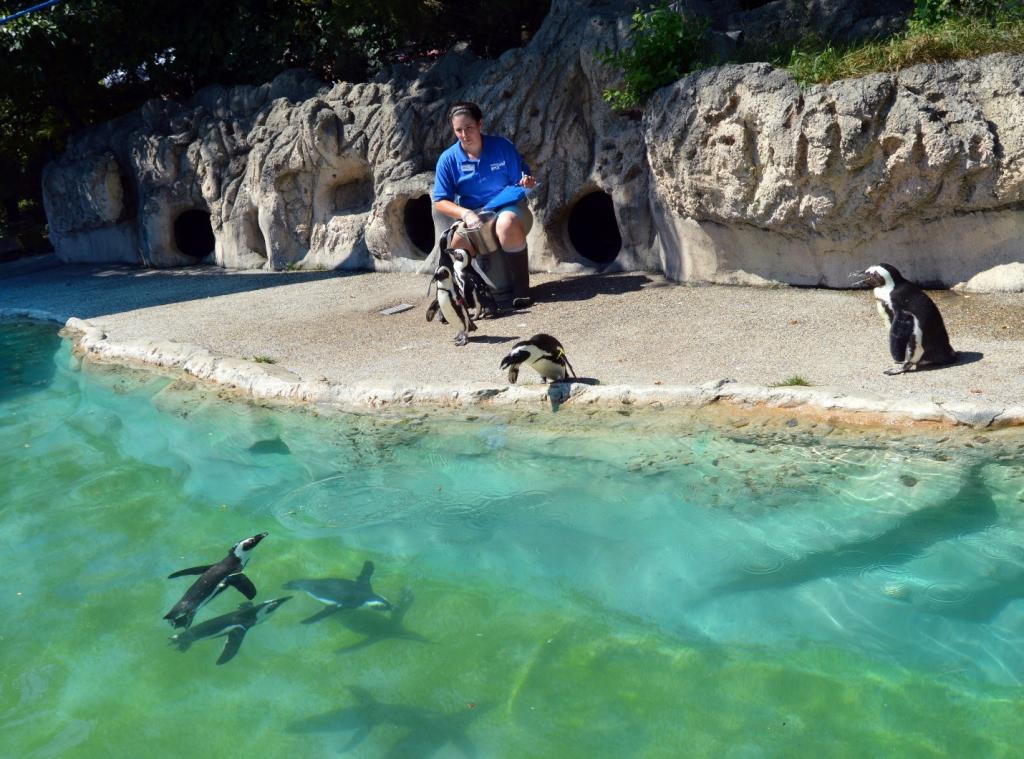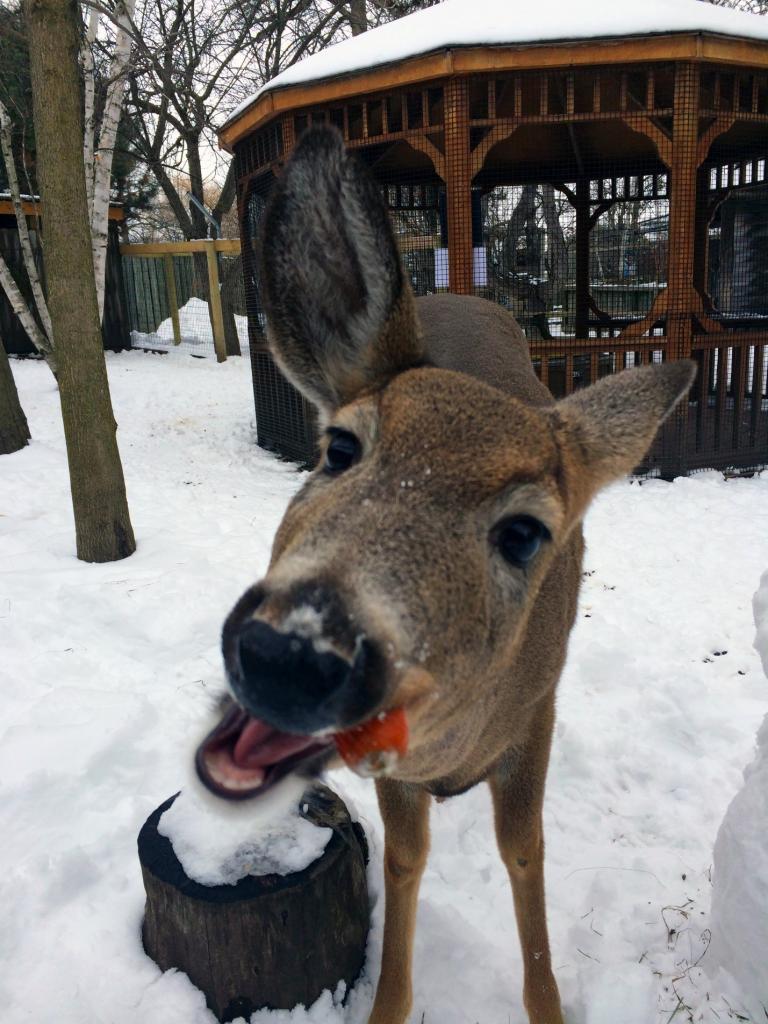
Just as good nutrition is important for humans, it is essential to the health of our animals. The animals in our collection come from different habitats and geographic locations, have different adaptations, and they eat different things. What they all have in common is that they have a dedicated staff caring for them that works to give them the best care possible, including their diets! Here’s a closer look at how we feed all of our animals and everything that goes into their nutrition.
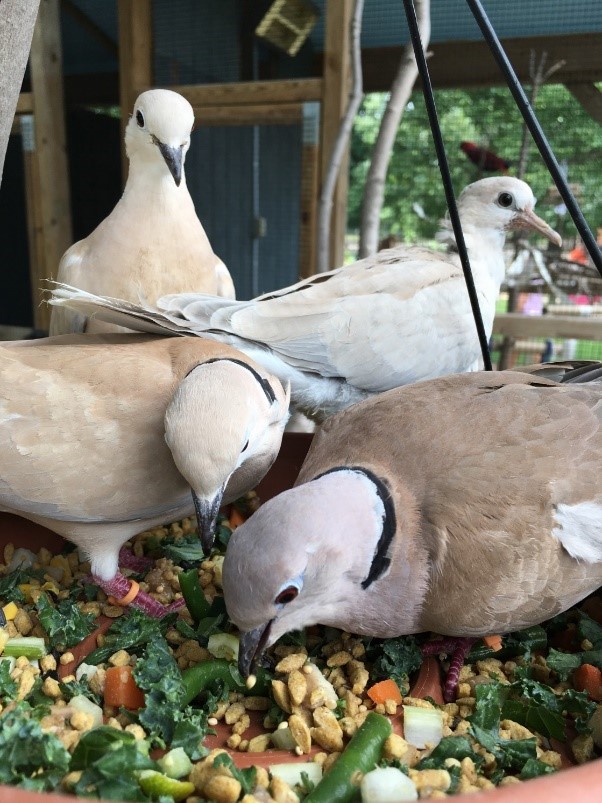
How do we know what animal eats what and how much?
Great question! It’s a long process to come up with the perfect diet for each animal. It involves doing research to fully understand the animals’ natural diets and collaboration with other facilities. The Association of Zoos and Aquariums also has Animal Care Manuals for many species that we can reference. Once we come up with a potential diet, our Zoo Vet takes a look over everything to ensure that we are going to offer the animal the best nutrition available. Once the animal is offered the diet, we record how much it eats and how much it doesn’t. We also frequently weigh each animal and check its body condition to ensure that they are happy and healthy. Each diet change keepers want to make for an animal has to be approved by the vet first.
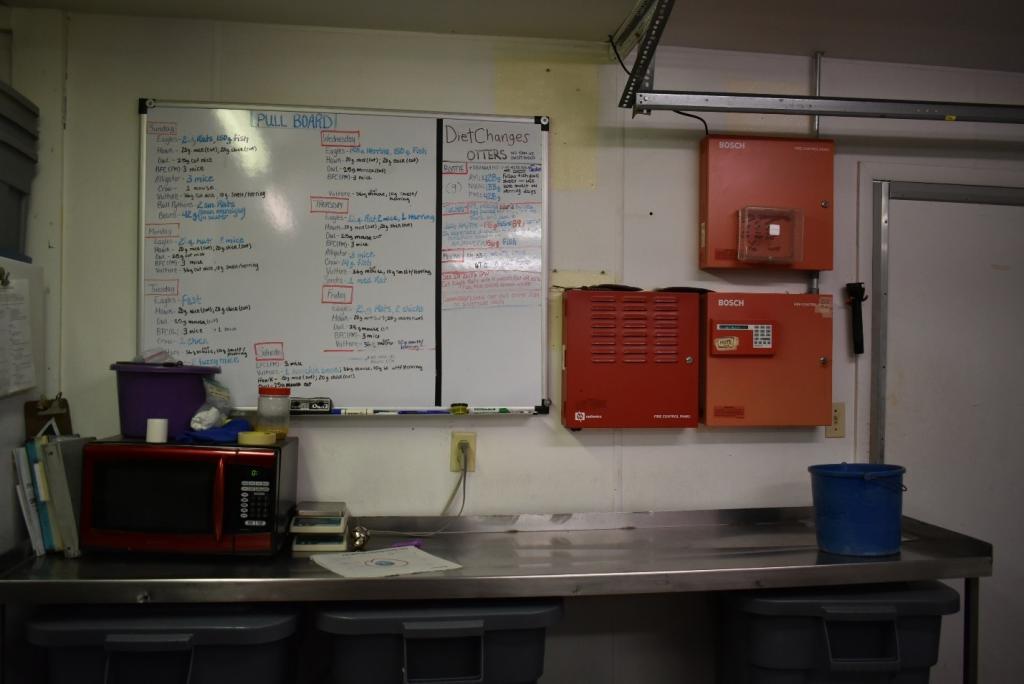
Where do we make the diets?
In a behind-the-scenes area, there is a commissary that we make all the diets in. It’s essentially the Zoo Kitchen! There are prep areas for keepers to make the diets and weigh out the exact amount of food needed. There’s a huge freezer and walk-in fridge to hold all of the diets and ingredients. The commissary becomes the hub for the keeper staff throughout the day, because they’re constantly popping in and out grabbing diets for their animals and dropping off dirty dishes.
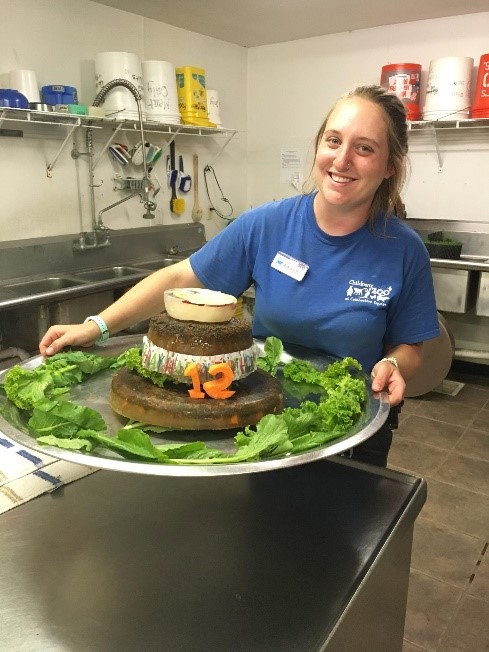
Where do we get all the ingredients?
We order fresh produce weekly from a local distributer. We get all of our seafood delivered about twice a year in a giant freezer-semi truck (about 2 tons annually!). We partnered with the Michigan Department of Natural Resources to get deer donated to the Zoo to feed the wolves! We also get hay delivered multiple times a year and store it in our hay barn. It may come as a surprise, but just like you feed your pet dog dog chow, there is a company (called Mazuri) that makes chow for pretty much any animal. Some of the chow we order includes New World Primate biscuits, mini pig elder, kangaroo chow, and exotic canine diet! We also use the eggs that our chickens lay here at the Zoo in the diets we feed to our other animals to be more sustainable!
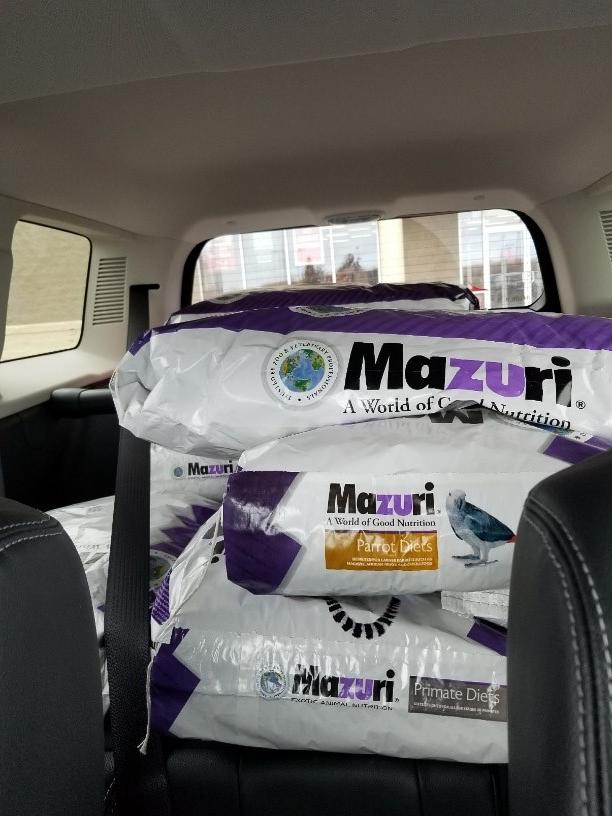
We also get a lot of the items we use in our commissary as enrichment donated to us by our awesome supporters! Here is a link if you are interested in donating any of these items!
How do you feed the animals?
That depends on the animal! If the animal is being trained, we try to use the majority of their diet for training. Our penguins get fed twice a day on exhibit! For our penguins, the keepers keep track of how much fish they eat during each feeding while also giving an information chat and feeding all nine of our penguins- talk about multi-tasking! Keepers will often place a portion of an animal’s diet in an enrichment item, so the animal is mentally stimulated and works to find their food, as they would naturally!
